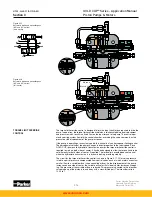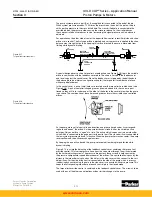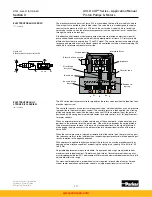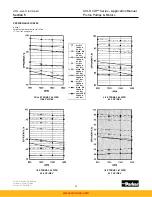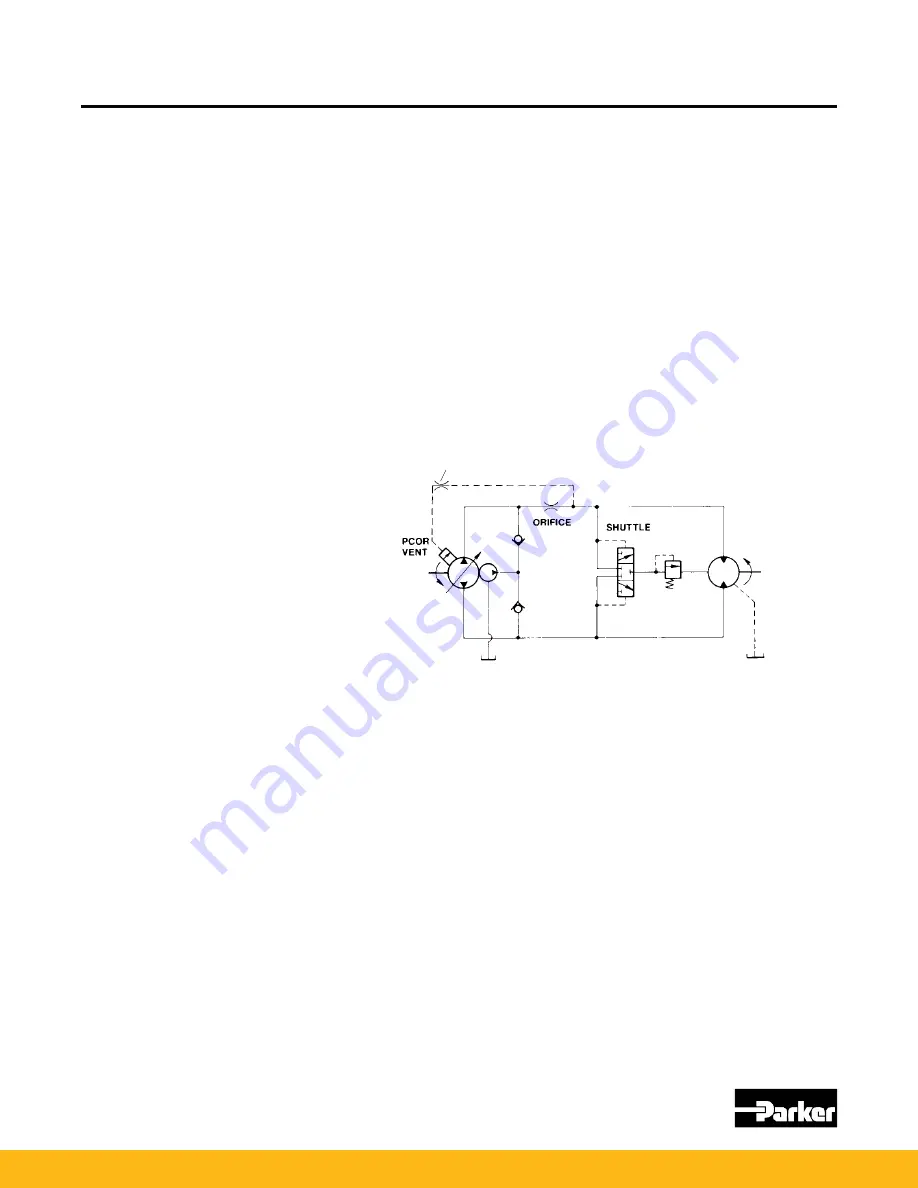
HY28-2668-01/GC/NA,EU
GOLD CUP
®
Series - Application Manual
Piston Pumps & Motors
4.3
Parker Hannifin Corporation
Hydraulic Pump Division
Marysville, Ohio USA
Section 4
The circuit drawing (Figure 4.4) shows the directional control valves as closed center parallel
valves. While these are the most desirable for this circuit, it is also possible to use parallel
system, open center valves which are normally used with fixed displacement pumps. In this
case, it is required to put some restriction or back pressure in the high pressure carry-over
port in order to build the pressure drop in the neutral position above the minimum compensa-
tor setting of the pressure compensator override. With this back pressure added to the valves
and when the valves are all in neutral position, the pump will be commanded to low pressure
due to the absence of pressure in the load circuits, and will be held to minimum displacement.
Without the back pressure, it is possible for the pump to be on stroke, although at low pres-
sure.
In the closed center system shown, in the neutral position the pump will be at low pressure,
again due to the lack of pressure in the load ports and will be at minimal flow due to the
blocked center position of the valves.
The enclosed circuit shows shuttle valves providing the load sensing logic to the vent port of
the pressure compensator override. Valve suppliers may provide this logic in the secondaries
of the control valve stacks. These valves may also contain the bleedout orifices as well.
Some applications require constant controlled speeds from an actuator despite varying en-
gine speeds. These applications include transit mixers, generators and refrigeration systems.
The GOLD CUP
®
pumps can be readily adapted to this type of system by using the modified
valve block with no orifice in the sequence poppet, with the addition of an orifice and a vent
line as shown in the circuit in Figure 4.5.
In this circuit, the top of the compensator sequence valve (see Circuitry Section 2) is con-
nected to the load side of the orifice by the vent line. When the pressure drop through the
orifice exceeds the pressure value of the spring on the sequence poppet the poppet rises and
allows flow into the stroking chamber. This action is independent of system pressure as long
as the pressure compensator override setting is not exceeded.
The above described system operates only in one direction of flow and only in the driving
mode. It does not regulate speed in reverse or during overhauling loads. If speed control is
desired in both directions, another orifice and vent line must be installed in the other system
leg. If the system will reverse but regulation is not desired, a reverse flow check should be
installed around the orifice. Even with additional vent lines and orifices in the opposite leg,
regulation will occur only in the driving mode. If regulation is required while retarding, contact
the Application Engineering Department.
On certain types of machines, it is desirable to have a control which will prevent motion of
the machine without an operator at the controls. Venting the compensator when the opera-
tor is not at his station will remove power from the transmission. Pump venting when under
pressure should be avoided. Consult Parker if necessary to vent under pressure (see Figure
4.1). If the machine is not moving, it should remain stationary. If it is moving, it will coast until
it stops. It should be noted that the machine will not stop rapidly with a vented compensator. If
it is required to stop rapidly, or hold on a grade, the same sensor that vents the compensator
should also set a parking brake.
Figure 4.5
Constant speed drive
CONSTANT SPEED DRIVES
DEAD MAN CONTROL
.047, 1mm ORIFICE
www.comoso.com






